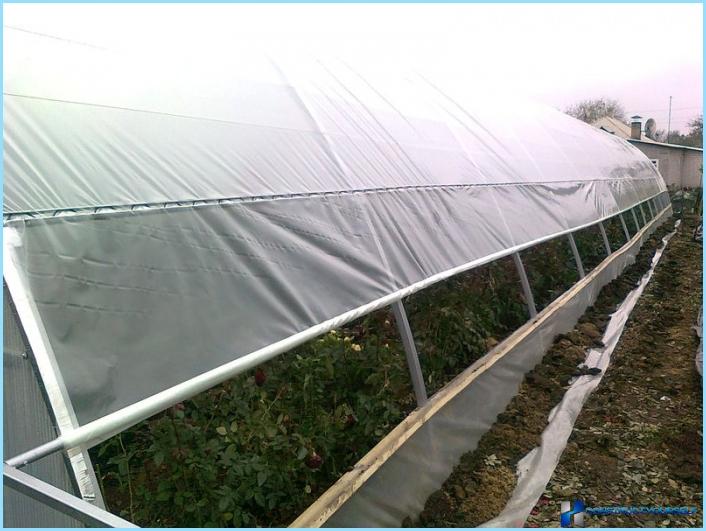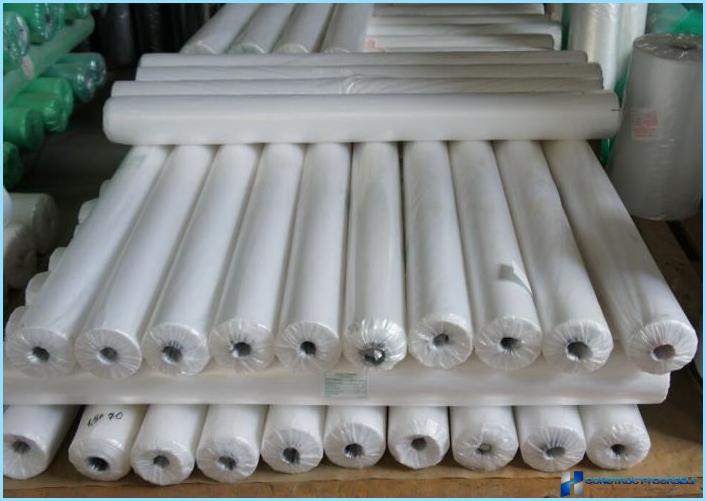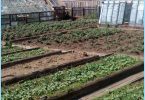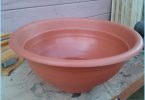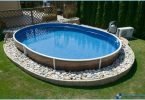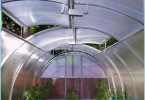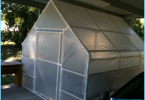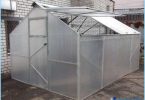Fresh vegetables – an essential element of healthy diet. It is twice more pleasant, when produce grown personally. To reduce the influence of climatic conditions of the region on the ripening of the crops capable of a greenhouse. A significant impact on the end result has the film which covers the design. Having studied the characteristics of the material, the period of operation and disadvantages, you decide how to choose the best product.
Types of films for greenhouses ↑
Currently, manufacturers offer a wide range of film intended for covering greenhouses, among them:
- the progenitor of all subsequent options – polyethylene;
- the improved version of PVC material;
- wired product;
- copolymer (frost);
- stable;
- infrared;
- light-diffusing.
Each of these types of films has a number of advantages and shortcomings of the individual.
Characteristics of the plastic material ↑
Polyethylene is actively operated even by our grandmothers, their niche in the spectrum of materials for covering greenhouses it still occupies.
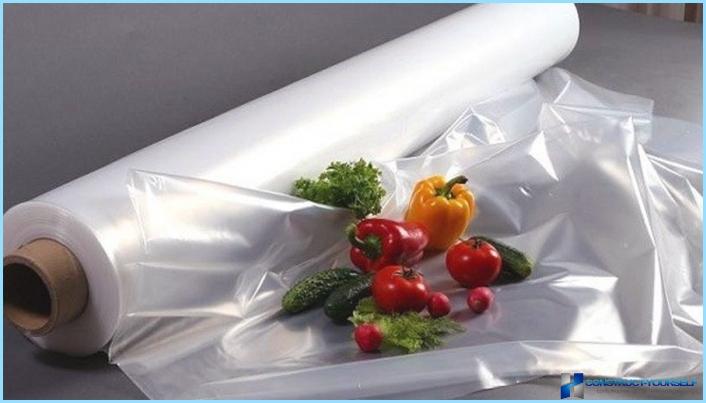
The reason for such lasting popularity is the low cost of the product. The material has a thickness of from 15 to 300 µm, for the greenhouse it is better to choose the range of 150-200 microns. In this case, when the relative resistance to weathering, the film passes a sufficient amount of light. For greenhouses arranged production of a polyethylene material with a width of 3 to 6 m. a Significant advantage in the form of low price is accompanied by many shortcomings:
- the period of operation at the greenhouse is not more than one season;
- film susceptible to stretching and further sagging;
- the material has a low hydrophilicity, it provokes the formation of drops that are harmful to plants in the greenhouse;
- due to the accumulation surface of the polyethylene electrostatic charge is the attraction of dust, reducing over time the transparency of the film by 24 %;
- passing the ultraviolet light and the light energy up to 80% in the night period it retains little heat;
- the procedure of consolidation in the greenhouse is accompanied by a number of difficulties.
A novice gardener, is not defined with the priority advantages of other types of films, it is optimal to stay on the inexpensive material. Watching for one season for the ripening process of vegetables, a picture emerges of the kind of film for greenhouses is best to choose.
Properties of PVC shelter
A fundamentally different level of strength are PVC products. Visually from a polyethylene precursor, they differ a yellowish edge and definitely reminiscent of the medical tube systems. A key advantage of PVC material – high thermal insulation properties. Day film passes a small amount of thermal energy and retains it at night in the greenhouse. This quality is especially valued in the breeding of eggplant and peppers, as plants stop growing at lower temperature regime below 15onWith.
With proper maintenance, manufacturers guarantee the suitability of PVC films for greenhouses for 5-8 years. Elastic and durable material has disadvantages:
- low frost resistance involves not only the destruction of film greenhouses in winter and storing it indoors where the temperature reaches -15onWith;
- the material is more expensive than the plastic counterpart in 2-3 times;
- a small bandwidth of ultraviolet rays (20%) not suitable for all types of crops;
- the ability to accumulate an electrostatic charge and attract dust leads to rapid contamination of the film;
- periodic sagging of the material requires regular pullups, or under the influence of wind the film on the greenhouse will quickly become worthless.
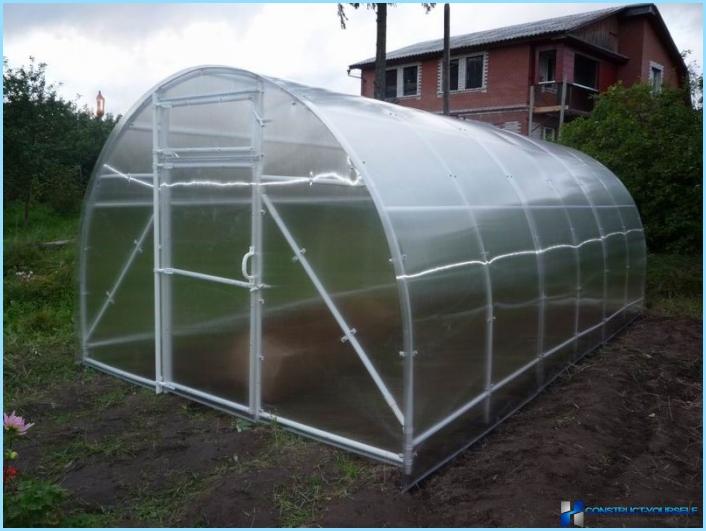
Features reinforced products ↑
If you wish to leave the shelter to spend the winter in the greenhouse, it is better to choose the reinforced film. In this case, the main burden falls on the design of a frame made of twisted polyethylene, polypropylene fibers or filaments of glass. The cell size ranges from 6-12 mm Connection: plastic frame gives the material a special strength. Experts recommend to choose a product for greenhouses with surface density of 150-200 g/mTwo, lower rates will lead to premature wear. Among the imported products meet «breathable» options film, where each cell is endowed with a tiny hole. This prevents the accumulation of condensation in the greenhouse.
The lifetime of reinforced tapes up to 3 years. In addition to strength, much difference with ordinary plastic counterpart is not observed.
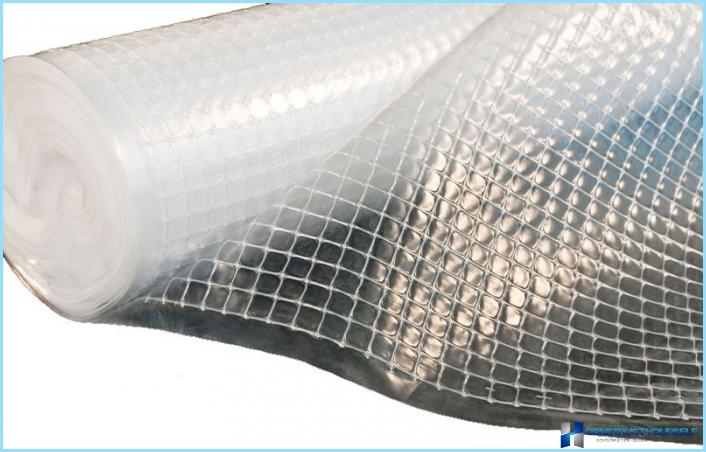
Hardy option ↑
Want to equip a greenhouse frost coating manufacturers offer to choose copolymer film. Distinguishing feature:
- high strength is characterized by resistance to wind loads, the piercing, the pressure;
- elasticity, the film is not prone to cracking when exposed to low temperatures;
- lightfastness, well keeps heat energy inside the greenhouse;
- high hydrophilicity, i.e. the moisture is evenly distributed over the film surface in a continuous layer without the formation of large drops.
A significant drawback of the material is a big transmission. Summer heat may cause overheating of the plants in the greenhouse. Manufacturers provide a guarantee for exploitation frost film for three years.
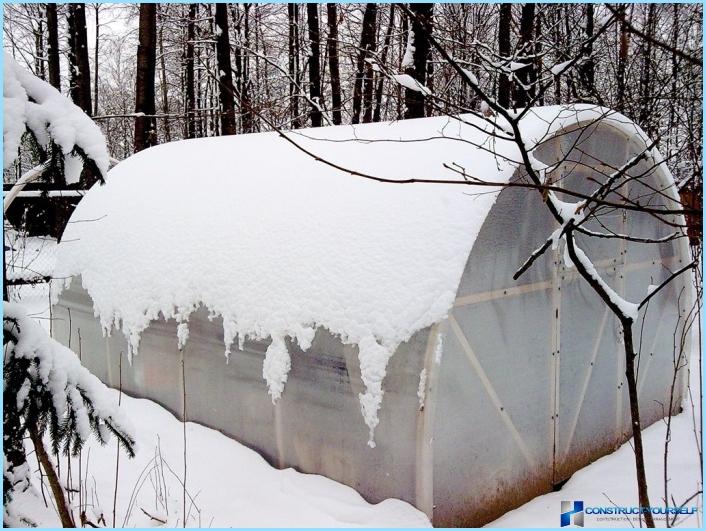
Other types ↑
In addition to the listed materials on the market, you can choose an improved version of the shelter – stable hydrophilic film. Among the advantages of the product reads:
- stability under the influence of light rays;
- the absence on the surface of large droplets of condensate;
- antistatic additives prevent quick accumulation of dust;
- temperature fluctuations during the day minor.
All this contributes to increase the yield of crops. Consumers are given the opportunity to choose the best material among the wide range of colors, thickness of the product varies from 80 to 150 microns. In the continuous operation may be up to 3 years.
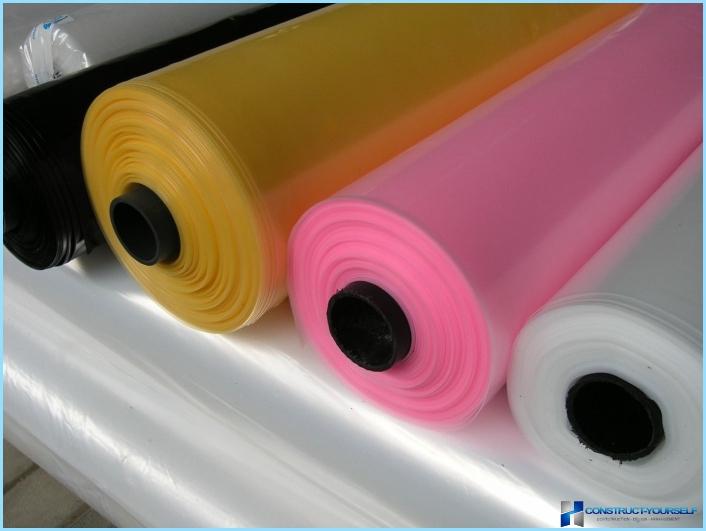
Introduction to material different supplements seek light-diffusing film. It is able to absorb ultraviolet radiation and to reflect thermal radiation, providing protection to plants from the risk of burns, which gives the opportunity to water them in the daytime without the risk of damaging the leaves.
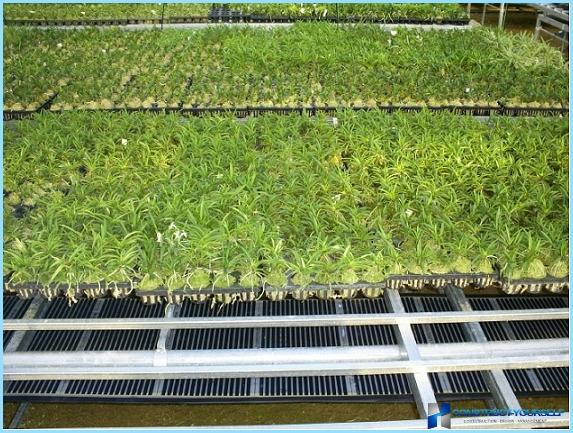
Innovative achievements of recent years has concerned the materials used for greenhouses. Infrared film is mounted in the base of the greenhouse and used as a warming element, working from electricity. For it is a regulator of a temperature mode, allowing to heat the air from 20 to 50onC. High cost of the product pays for itself in long period of operation. The life of the product reaches 30 years. Using new in combination with frost-resistant material for covering greenhouses to grow fresh vegetables year-round.
Often produce material that is endowed with several beneficial properties at the same time. It can be:
- high hydrophilicity;
- resistance to exposure to light;
- high heat-retaining quality, preventing the penetration of infrared radiation;
- anti-static properties that do not allow rapid accumulation of surface dust;
- transformative quality, enabling to transmit ultraviolet light and to block the path of infrared rays.
What is the best option to choose depends on the goals and prospects of further activities.
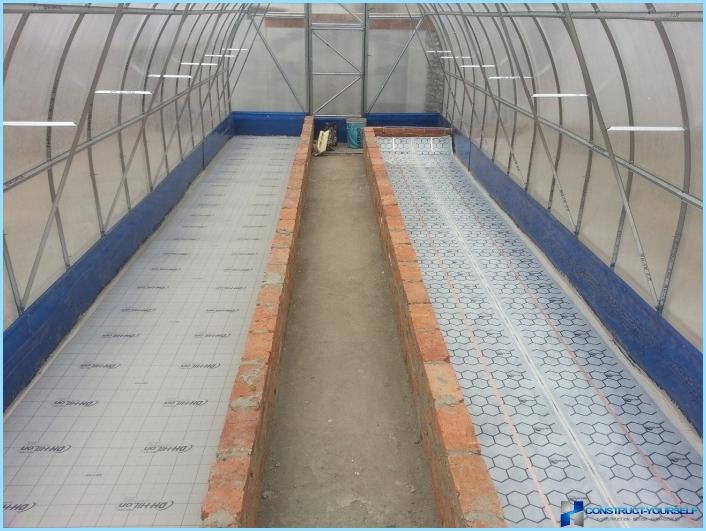
Greenhouse under the film ↑
Having decided to choose film as the basic material for the shelter of the greenhouses should be considered acceptable designs. The optimal dimensions of the structures vary within the following limits: width – 2,4 m, height – 2.5 m, length from 6 to 7 PM When you have free time to get ready to copy optional. To make yourself a greenhouse under the film much more interesting. Experts offer 3 choices of frame – metal, wooden and on the basis of RAM.
The metal arch is made from tubes ø 2,5-3,0 see the reason may be old railway sleepers or tarred timber. Installation of greenhouses under the film includes the following steps:
- For mounting the arches in the wooden base of the greenhouse are prepared holes to a depth of 7-10 cm.
- Arches are installed at a distance of 1-1,5 m from each other.
- If the base of the greenhouse is planned to produce metal, it is optimal to stay in the area. In this case, the design connected with bolts or welded seam.
- Ridged rail serves the function of connecting arches at the top, the sides, the design is fixed runs. As the base, the metallic elements of the greenhouse is connected by welding or bolts.
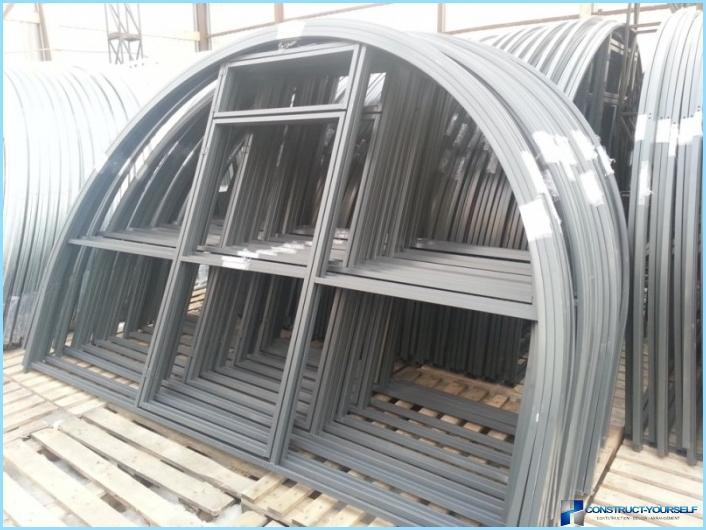
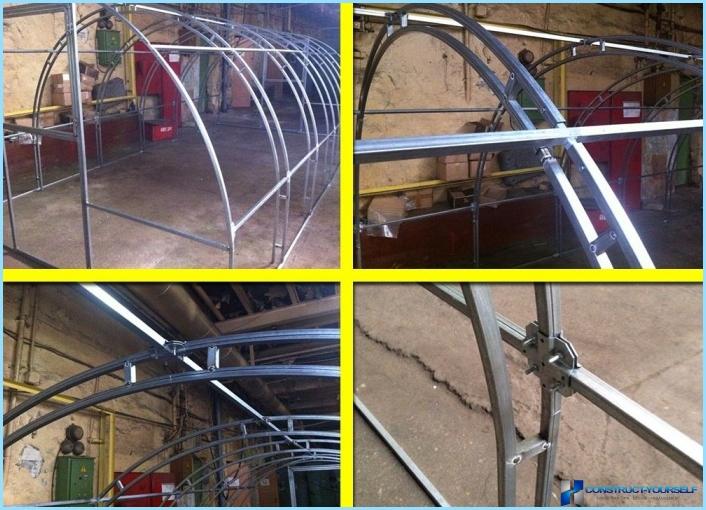
To carry the carcass of a heifer under the film of wood is an acceptable solution. This will require:
- To select a material in the form of timber with a minimum cross-section 50/50 mm.
- Pre-treated wooden elements of future greenhouse antiseptic and dry well before mounting works.
- The base is filled with concrete or mortar is installed in the beam cross-section 50/100 mm.
- Roughly to the side walls ready 4 lumber, the end surfaces will need two bars.
- In proportion to the lateral structures set the beams forming the roof. Completes the construction of greenhouses under the film ridge beam.
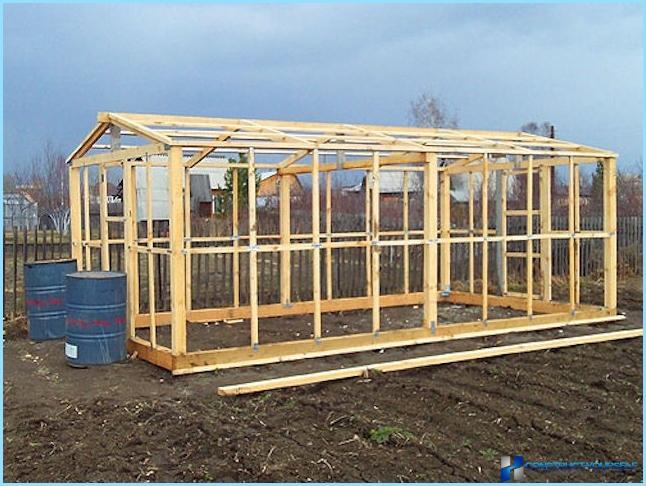
The next version of the greenhouse structure, assembled from frames. You can use it as obsolete the old copies and the new products gathered on their own. The main stages of work:
- For RAM, you’ll need timber сечением30/40 mm.
- Engineering frame sizes, to reduce waste find out beforehand the size of the film, which will be attached.
- The optimal size of design – 1.5 m wide and 1.5-1.8 m in length.
- The film is recommended to pull in two layers.
- Prepared frame mounted in the frame structure.
- The basis of the framework can serve as a metal area or wooden beams.
- Frames of film are mounted on a wooden frame with nails, and is intended for ventilation are hung on hinges.
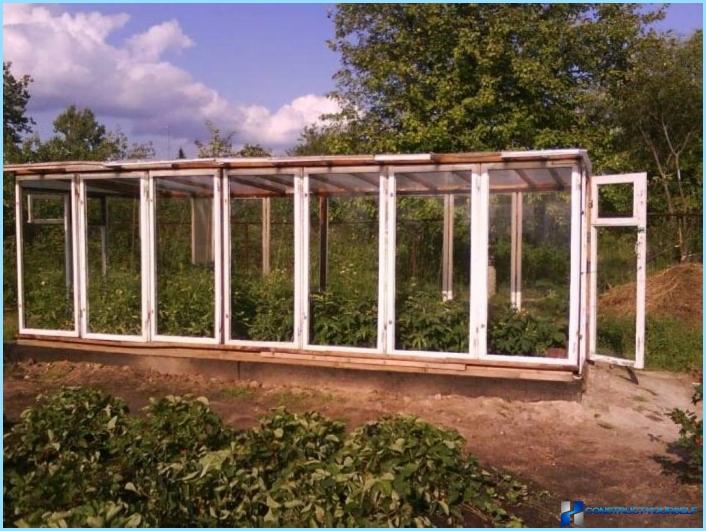
How to cover the greenhouse film ↑
Any film exposed to mechanical damage, so it is crucial that it is properly secure to the frame. Experts recommend to observe the following rules:
- The frame of the greenhouse, particularly metal exposed to extreme heat, so the film at points of contact wears out faster. To slow down the process will help paint the design in white or isolation of connecting parts of the light matter.
- Mount cleat nails significantly damage the integrity of the film. For these purposes it is better to choose a fixation stapler with staples. The procedure is performed so that the strap was inside.
- Pull the tape on the frame in stages: first the bar bolted to the base on one side of the greenhouse, then the tape is moved through the roof of the buildings on the other side with subsequent fixation at the base.
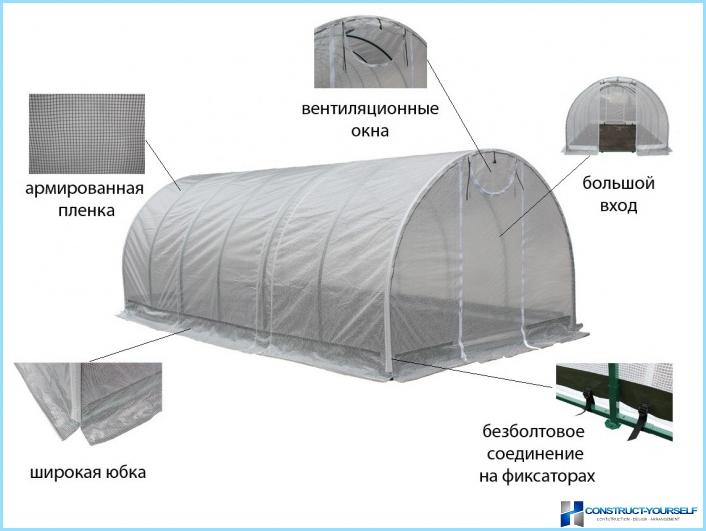
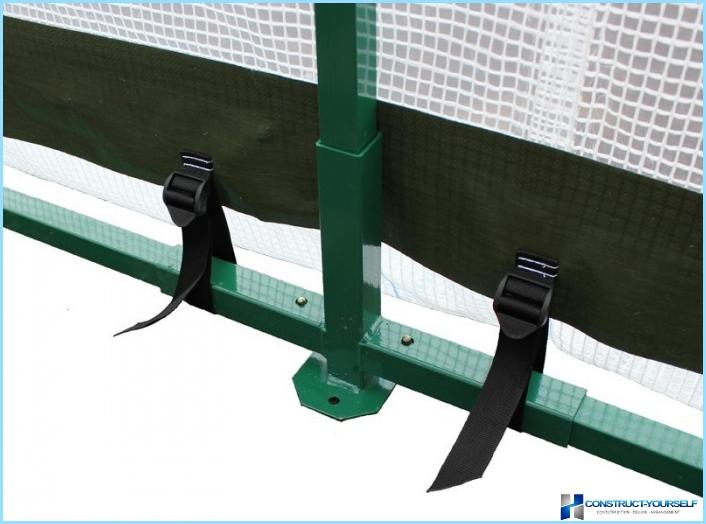
In addition to using straps, you can choose alternative methods of attachment. You can just use the special clamps that are sold in stores or make them yourself. To hold the material covering the greenhouse, apply the mesh, adhering it to the body. In this case, the product requires regular monitoring and pull-UPS. Elastic cords and ropes will also help in fixing the issue.
When there is insufficient width of material, required capacity. Glue film for greenhouses is available in several ways:
- To choose the stitching wide tape. The procedure is carried out only on a clean, not dusty material. Before the procedure the surface with the aim of degreasing is wiped with alcohol. After applying the tape, the joints shall be cleaned with a soft cloth to remove air bubbles.
- To connect the junction with a flat iron – is much harder. To do this, the pieces of film are spread out on a flat surface, cover with paper and gently iron. After cooling the paper, it is removed.
- Experienced craftsmen can help out a blowtorch.
- Waterproof glue is yet another opportunity to connect the intersection of material for greenhouses. The product before the bonding procedure also degreased.
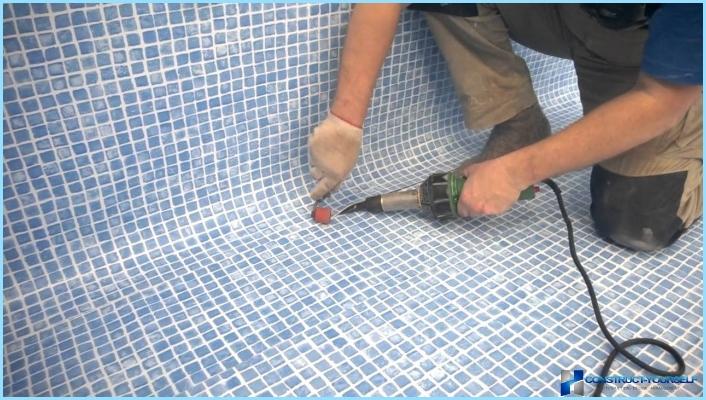
Looking at the properties of different types of film, variants of frameworks of greenhouses, the process of fixation of the material and ways of its connection, it will be easier to choose the best option individually suited to the situation.

